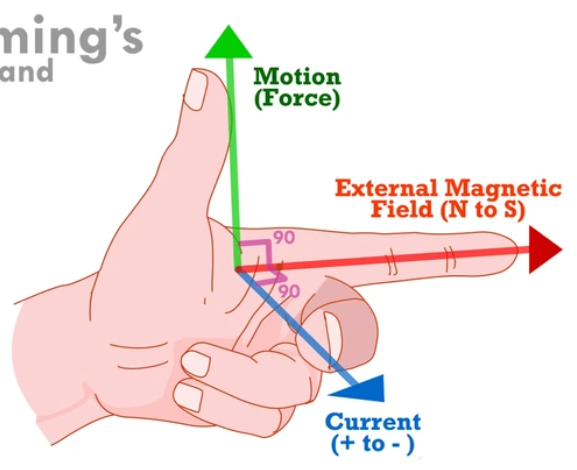Force on a Current-Carrying Conductor in a Magnetic Field
What is the Force on a Current-Carrying Conductor?
When a current-carrying conductor is placed in a magnetic field, it experiences a force. This phenomenon is the basis for many electrical devices, such as electric motors and galvanometers.
Force on a Straight Conductor
The force (F) experienced by a straight current-carrying conductor of length L, carrying current I, and placed in a magnetic field B is given by:
Where:
- F = Force on the conductor (in Newtons).
- I = Current in the conductor (in Amperes).
- L = Length of the conductor (in meters).
- B = Magnetic field strength (in Tesla).
- θ = Angle between the current direction and the magnetic field.
Force on a Straight Conductor

The direction of the force is given by Fleming’s Left-Hand Rule:
- Stretch the thumb, forefinger, and middle finger of your left hand mutually perpendicular to each other.
- Forefinger points in the direction of the magnetic field (B).
- Middle finger points in the direction of the current (I).
- Thumb points in the direction of the force (F).
Force on a Circular Loop
For a circular loop carrying current in a magnetic field, the force acts on each segment of the loop. The net force on the loop is zero, but it experiences a torque that tends to rotate it.
Force on a Circular Loop

The torque (τ) on a circular loop of area A, carrying current I, and placed in a magnetic field B is given by:
Where:
- τ = Torque on the loop (in Newton-meters).
- I = Current in the loop (in Amperes).
- A = Area of the loop (in square meters).
- B = Magnetic field strength (in Tesla).
- θ = Angle between the normal to the loop and the magnetic field.
Force on a Solenoid
A solenoid carrying current in a magnetic field experiences a force on each turn of the coil. The net force depends on the orientation of the solenoid relative to the magnetic field.
Force on a Solenoid

The force on a solenoid of length L, number of turns N, and carrying current I in a magnetic field B is given by:
Where:
- F = Force on the solenoid (in Newtons).
- N = Number of turns in the solenoid.
- I = Current in the solenoid (in Amperes).
- L = Length of the solenoid (in meters).
- B = Magnetic field strength (in Tesla).
- θ = Angle between the solenoid axis and the magnetic field.
Key Points to Remember
- The force on a current-carrying conductor in a magnetic field is given by F = I L B sinθ.
- The direction of the force is determined by Fleming’s Left-Hand Rule.
- A circular loop in a magnetic field experiences a torque given by τ = I A B sinθ.
- A solenoid in a magnetic field experiences a force given by F = N I L B sinθ.
- The force is maximum when the conductor is perpendicular to the magnetic field (θ = 90°).



